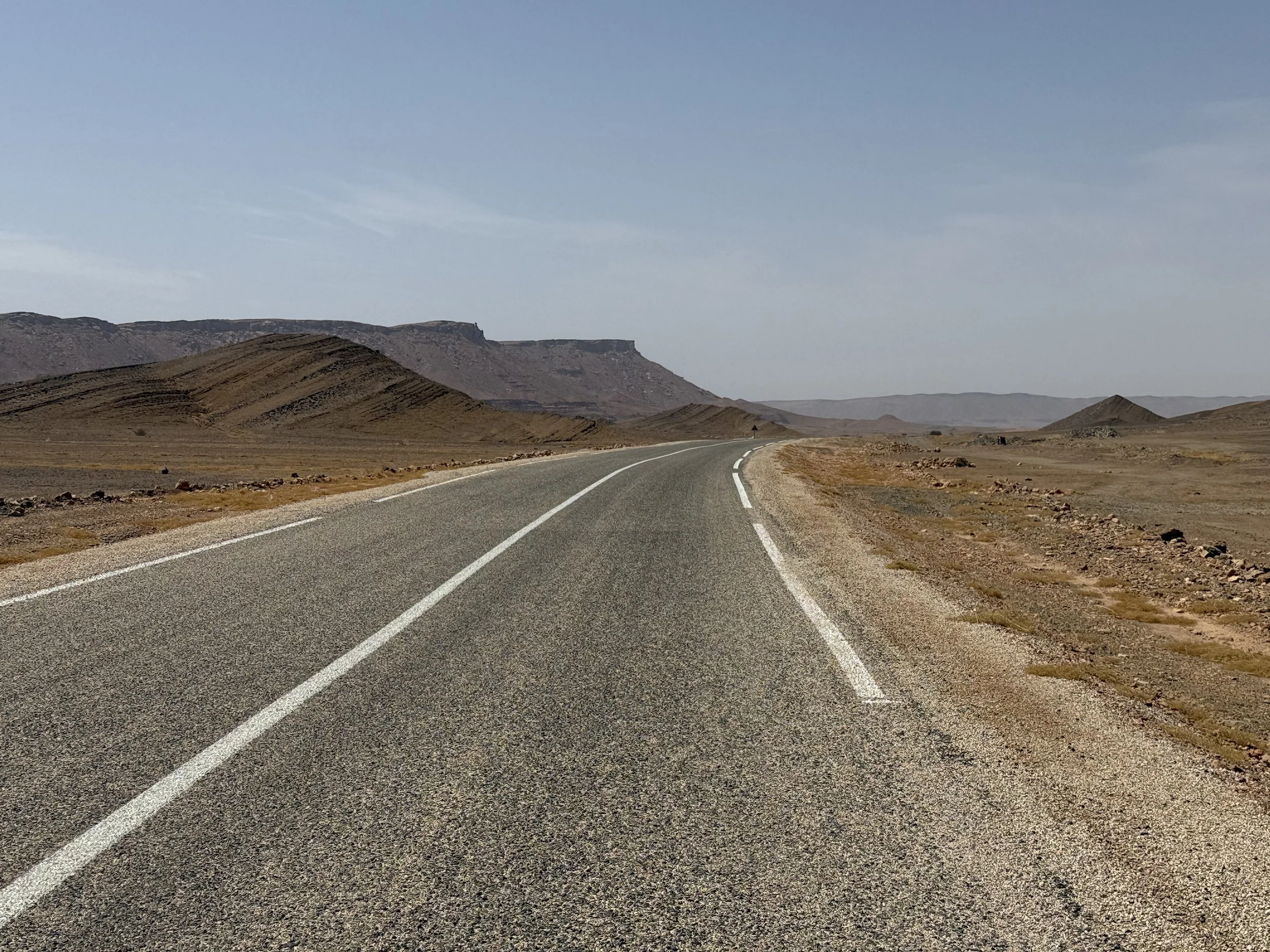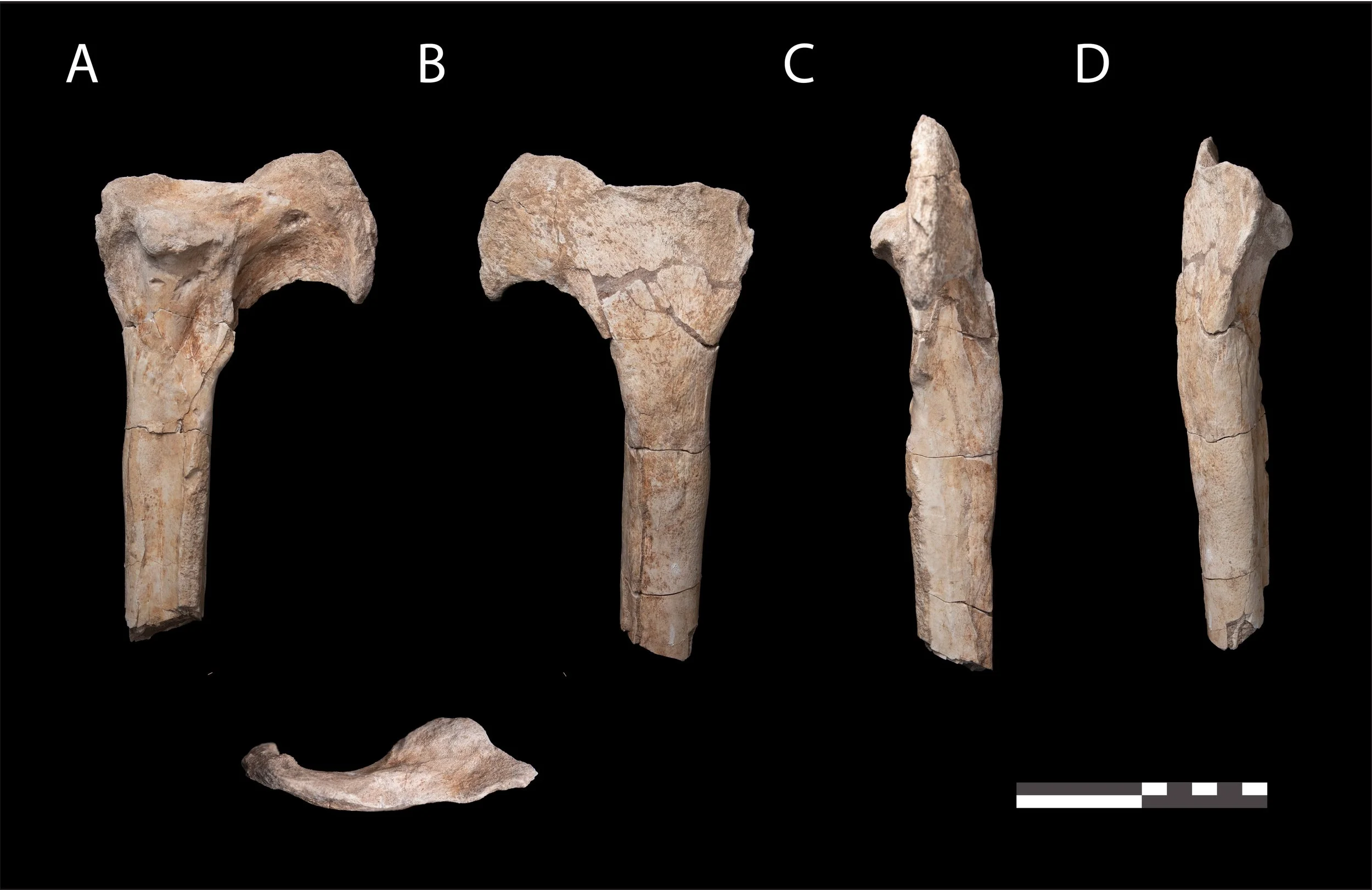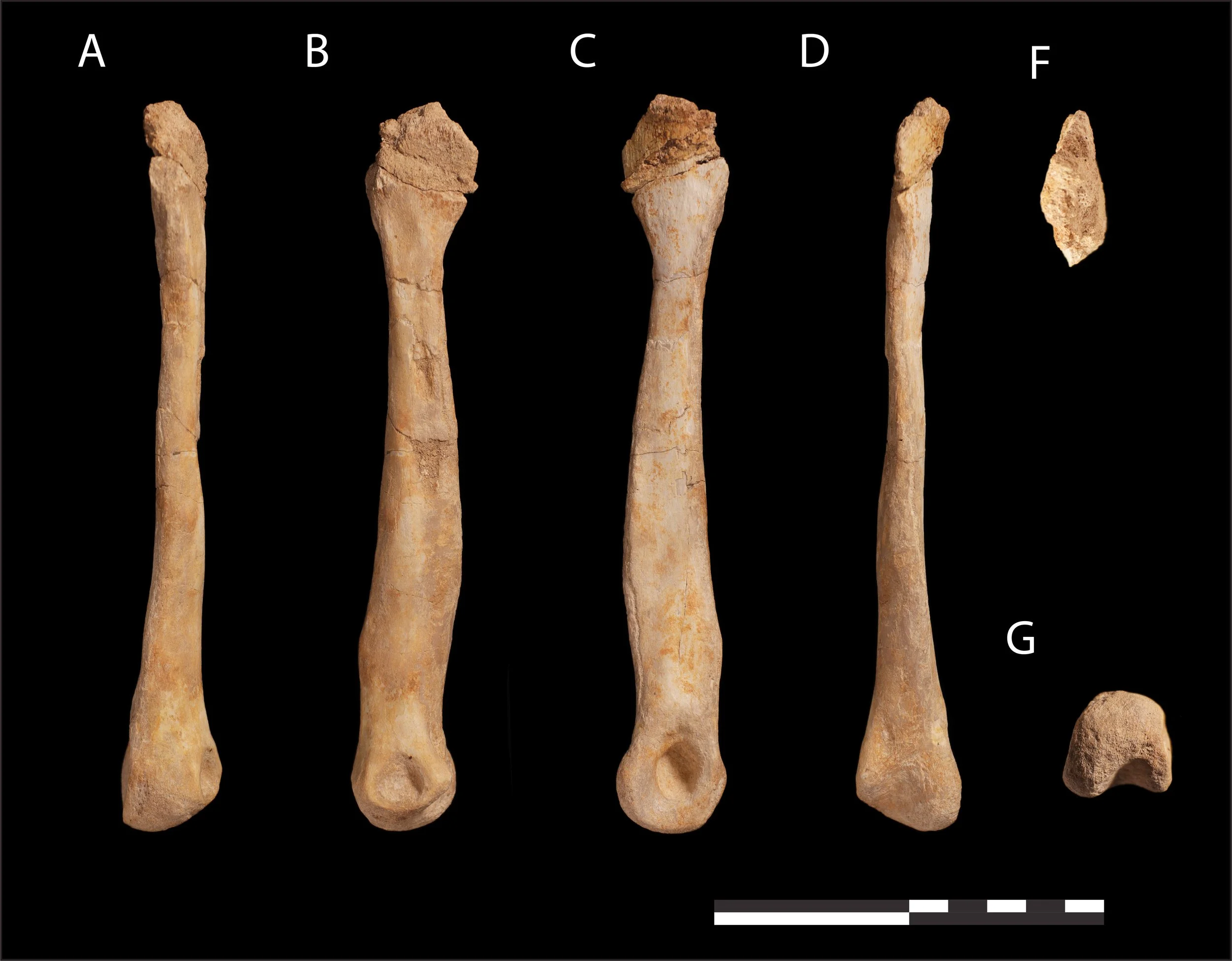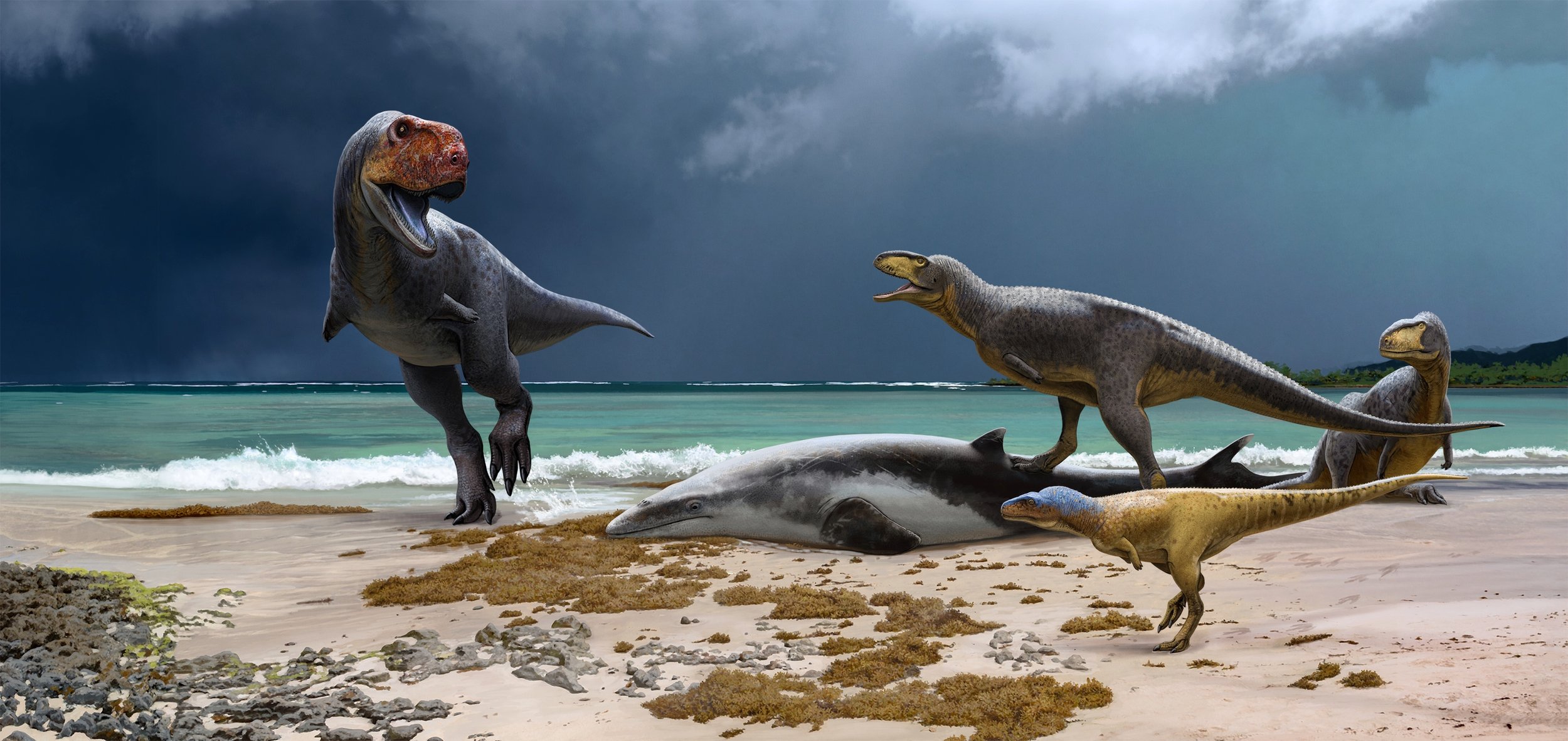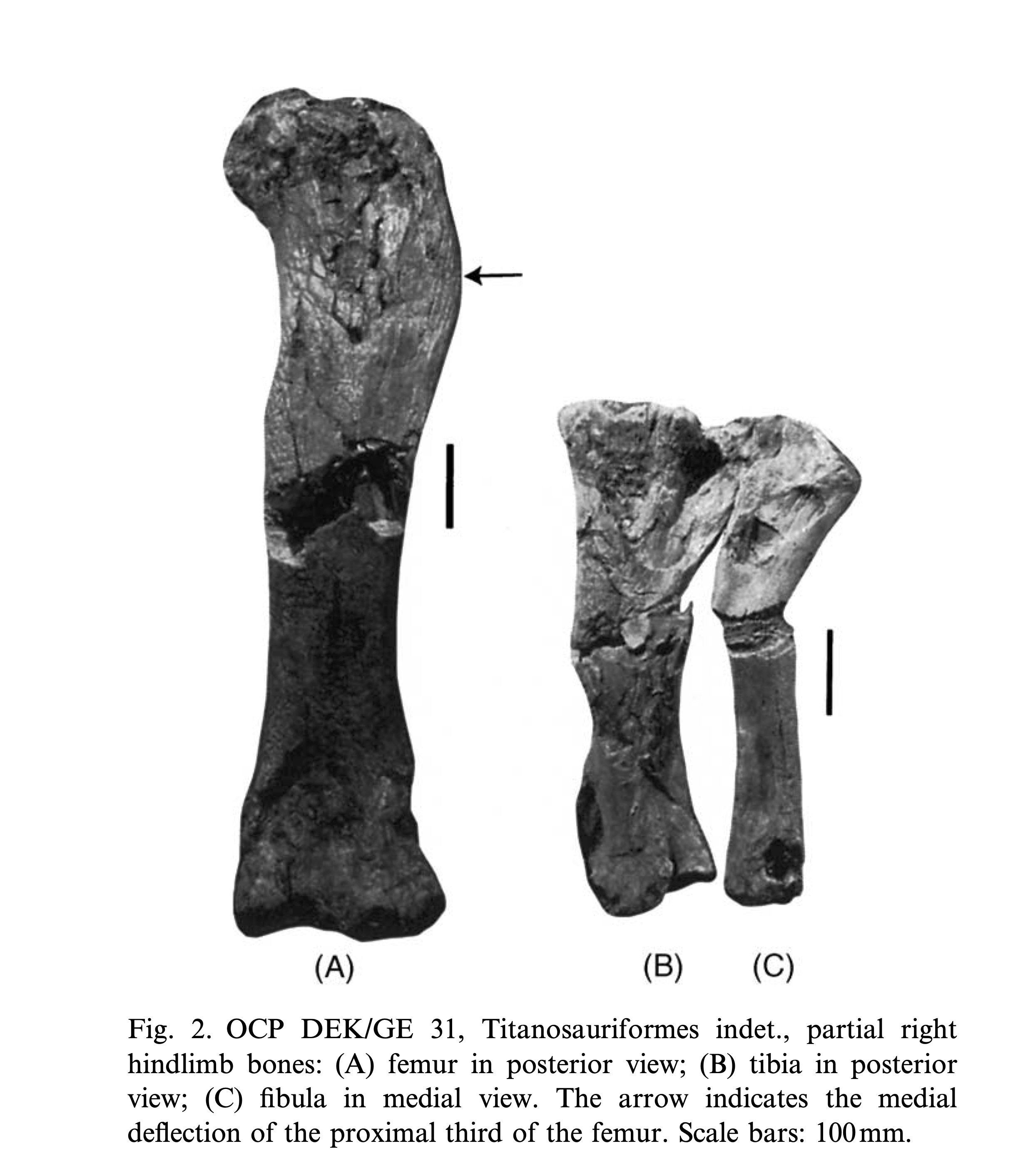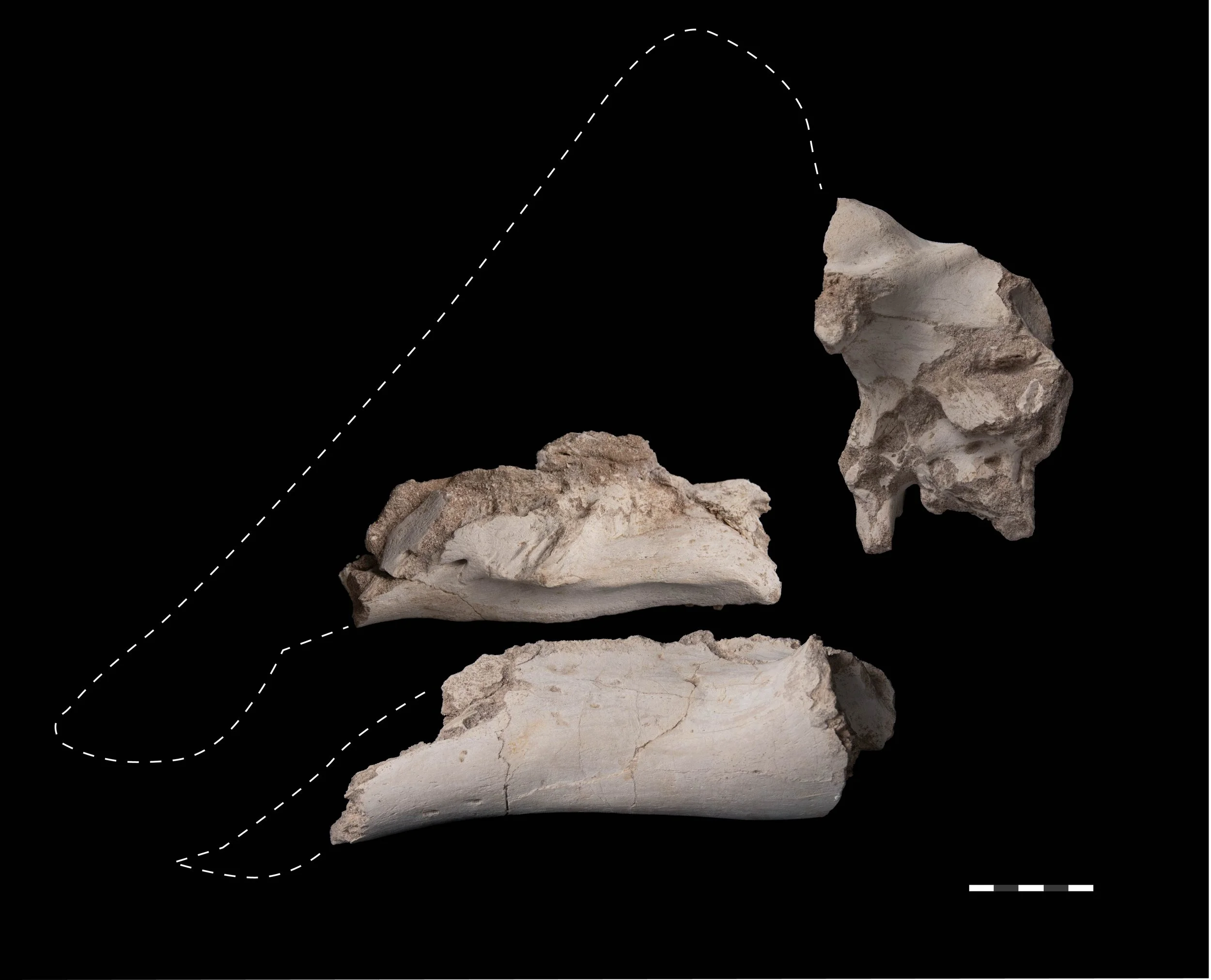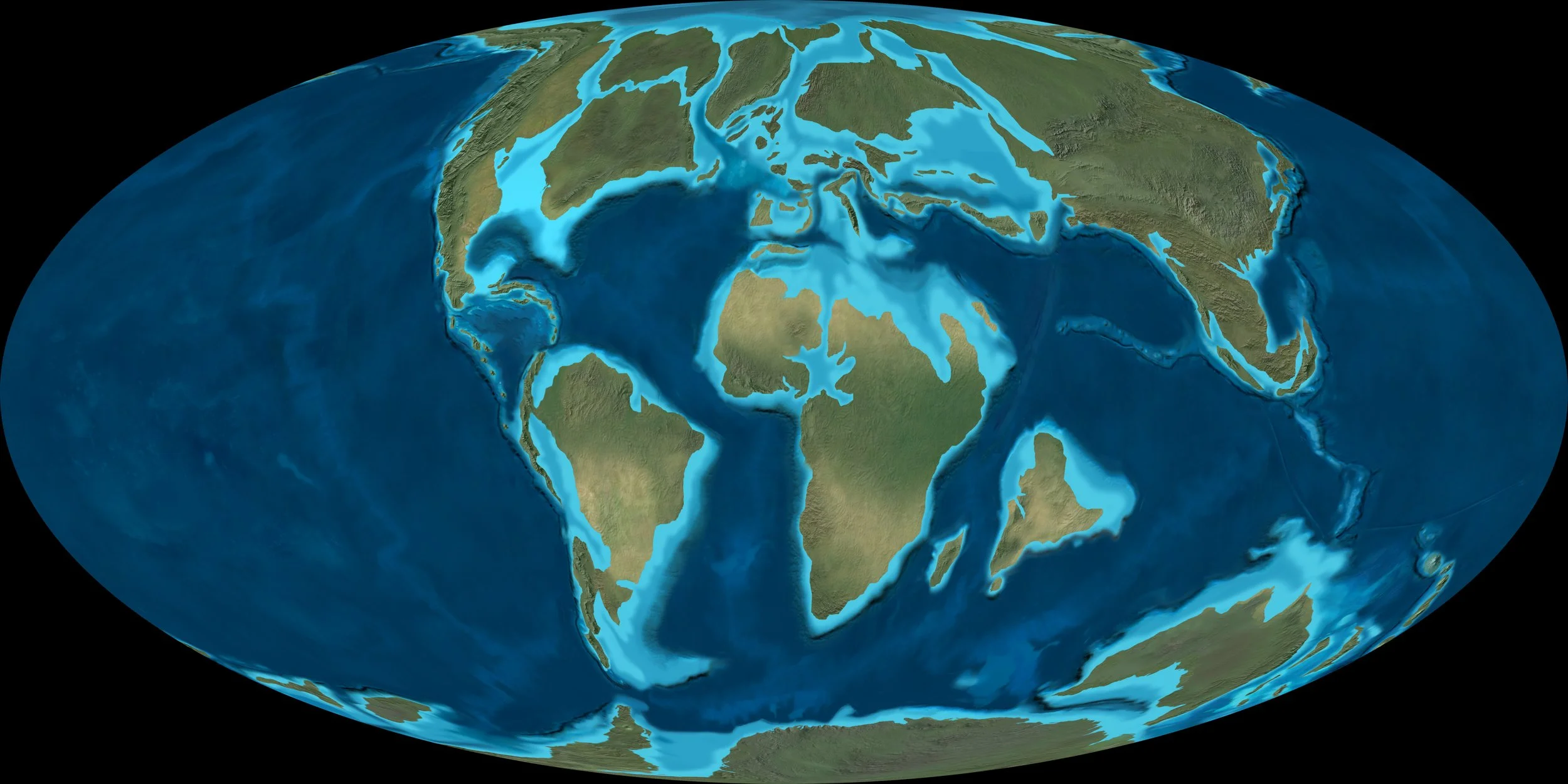Africa’s Last Dinosaurs
A review of Morocco’s Maastrichtian dinosaur fauna; African Dinosaur Biogeography; and what Morocco’s abelisaurs, duckbills and titanosaurs say about the end of the Age of Dinosaurs
The end of the Age of Dinosaurs in Africa has long been a paleontological black hole; it’s a place not a lot of information comes out of. In recent years my colleagues and I have been working on new fossils from Morocco to change that. We’ve described a unique assemblage of dinosaurs, unlike anything seen anywhere else in the world— a fauna of predatory abelisaurids, giant titanosaurs, little duckbills. It’s a sort of Lost World, a world until only recently unknown to science, and also existing in isolation at the end of the Cretaceous. But the Moroccan fauna is especially interesting because it comes from the final million years of the Cretaceous, from 67 to 66 million years ago. These were among the last dinosaurs on Earth, the dinosaurs of the End Times, and they help us understand what happened to the dinosaurs.
Maybe the most fascinating thing about the dinosaurs is their extinction. Dinosaurs were wildly successful for 150 million years. They were the dominant herbivores and carnivores on all continents, ranging in size from just a few pounds to giants larger than all but the largest whales— the largest land animals of all time. And then they all vanished. How, and why did they disappear?
This question gets at a fundamental problem in evolutionary biology, the debate between Gradualism and Catastrophism— the role of slow, gradual, everyday processes in driving evolution, versus rapid, rare, extreme events- catastrophes.
Georges Cuvier, one of the first paleontologists, believed extinction was driven by catastrophes- floods, volcanoes, droughts- wiping out huge numbers of species. These were both metaphorical and literal Acts of God (Cuvier was a Creationist- he had to be, because Darwin hadn’t yet written Origin). Later, in the Origin of Species, Darwin invoked gradual processes to explain evolution and extinction. Over millions of years, he argued, climate change, competition, and predation slowly drove species extinct, just as rain, snow and ice slowly level mountains. Darwin’s gradualist worldview won out, at least initially— he invoked processes we could see operating all around us; this paradigm seemed more rational, and more scientific. And so, for most of the 20th century dinosaur extinction was thought to result from gradual environmental changes, competition with mammals, and soforth.
In the late 20th century, however, the idea of catastrophic extinction made a remarkable comeback. Our improved understanding of fossil diversity, and our ability to date fossils more precisely, showed something truly profound was happening at the end of the Cretaceous- this wasn’t standard turnover, or a gradual shift- vast numbers of species, marine and terrestrial, disappeared around the world in a short time.
The discovery of an iridium anomaly at the Cretaceous-Paleogene boundary provided a mechanism that could drive a catastrophic extinction of dinosaurs and other species. Iridium is a metal that’s rare on Earth’s surface but abundant in space, especially in asteroids. The clay of the K-Pg boundary layer had high levels of iridium, an order of magnitude above background levels, suggesting a giant asteroid struck the planet at this time.
You can’t see the crater left by the asteroid impact at the end of the Cretaceous, it’s miles underground. The best you can do is visit the seaside town of Chicxulub, Mexico which is built above the site of the impact.
A few years later, the giant, 110-mile wide Chicxulub impact crater was discovered under the Yucatán in Mexico, dating precisely to the Cretaceous-Paleogene boundary, at 66 million years ago. It’s thought that dust and soot launched into the high atmosphere by the impact darkened the skies, causing a shutdown of photosynthesis and global cooling, starving and freezing the planet— and the dinosaurs.
There’s been an ongoing debate about the extent to which the asteroid or gradual processes drove the end-Cretaceous extinction. Dinosaurs naturally play a big role in the debate. One argument holds that dinosaurs were in decline in the final 10 million years of the Cretaceous; in this scenario the asteroid was either the coup de grace that finished off a group in decline, or one of several factors contributing to dinosaur extinction. I’m skeptical of a decline. Part of the reason is that this narrative is heavily driven by the Western Interior of North America. Here, the dinosaurs of southern Canada and Montana definitely show a decline in the number of species, but it’s a bit unclear whether this is regional, or just a local phenomenon. There have been global diversity studies, but they’re so heavily influenced by these formations (I’d guestimate they contain 10-20% of all known dinosaur species) that attempts to reconstruct global diversity are inevitably driven by North American diversity.
A better understanding of this problem requires looking at other dinosaur faunas, to understand what the dinosaurs are doing worldwide. Unfortunately it’s not possible to simply look for dinosaurs anywhere.
First, to find dinosaurs, it’s necessary to search somewhere where sediments were being deposited 66 million years ago, potentially burying dinosaurs in sedimentary rock.
Then, the bones of those dinosaurs need to have been preserved rather than just rotting away, or being dissolved by soil acids.
Next, the rocks containing dinosaur bones need to have been preserved for 66 million years, rather than being destroyed by erosion.
But they also need to have been exposed by erosion so that we can prospect them, and not be buried under forests or grassland.
Very few places meet these criteria- almost anywhere you look, the dinosaurs are buried miles underground, or their bones were eroded away long ago, or never even preserved in the first place.
And maddeningly, in some places we do have dinosaurs from near the end of the Cretaceous, but their age is unknown; the dating just isn’t precise enough. The dinosaurs of the Nemegt Formation in Mongolia could be anywhere from 66-72 million years old- Mongolian dinosaurs like Tarbosaurus and Deinocheirus may have been among the last dinosaurs on earth, or have lived five or six million years before the final extinction.
Morocco isn’t an obvious place to go hunting for these last dinosaurs. The phosphate beds of Khouribga, northeast of Casablanca, are extraordinarily rich in fossils, and these fossils date to the final million years of Cretaceous, 66-67 million years ago. They’re contemporary with the latest Maastrichtian aged T. rex-Triceratops fauna of the Hell Creek and Lance formations in the American West. But there’s one problem: these beds are marine, and dinosaurs were not.
Marine beds in the middle of the desert— the cliff-forming limestones of the Turonian Akrabou Formation (here covering the top of the Kem Kem, near Ouzina, Morocco) mark the incursion a seaway into the Sahara of Morocco.
In the late Cretaceous, high levels of volcanic activity raised the sea levels— huge volcanic mountains built up along mid-ocean ridges displaced so much water that the seas flooded up onto the continents. The Atlantic flooded huge areas of Morocco, extending inland as far as what is now Casablanca, into the Atlas, and even the Sahara. Fish, sharks, ammonites, and giant marine reptiles- mosasaurs, plesiosaurs, giant sea turtles- swam where now there’s wheat farms, mountains and desert sand dunes. These seas formed huge deposits of phosphate, derived from fish bones and other remains, now mined for stuff like fertilizer and the phosphoric acid that goes in stuff like Coca-Cola to make it tart.
Complete skeleton of Mosasaurus beaugei from the late Maastrichtian phosphates of Morocco
Dinosaurs were terrestrial animals, so they don’t often show up marine beds. They do wash out to sea occasionally, but they’re less than a tenth of a percent of a marine fossil assemblage. But extraordinarily, so many fossils have emerged from Morocco’s phosphate mines- thousands of skeletons, skulls, jaws, millions of isolated bones and teeth- that we’re finding dinosaurs.
Dinosaurs are your metaphorical needle in a haystack, but if you go through enough haystacks, it’s possible to make a nice collection of needles. That’s what we’ve done for the past ten years— in the process of surveying marine reptiles we’ve kept an eye out for dinosaurs, and slowly put together a dinosaur collection. We now have fossils suggesting around nine or ten species, although not all are complete enough to name, we’re still trying to figure out what we have, and we’re still looking for more. What they show us is a dinosaur community thriving in northwest Africa just before the asteroid impact- and a fauna that’s distinct from anything found anywhere else on Earth.
What follows is a brief review.
Preservation of the Dinosaurs
Dinosaurs often preserve in the phosphates as isolated bones and sometimes teeth. It is also fairly common to find associated but fragmentary skulls and skeletons- a partial hindlimb, a forelimb, a pelvis, a disarticulated skull. The dinosaur remains appear to be the result of ‘bloat and float’— the carcasses are washed out to sea— perhaps they were swept out to sea by rivers in flood, or hurricanes, or perhaps dinosaurs swam out to islands to forage, and occasionally got swept out to sea, and drowned. However it happens, the dinosaurs then seem to have floated for a while— as the carcass decays, gases build up in the body cavity and guts, keeping it afloat. The carcass rots as sharks, fish and mosasaurs scavenge, biting off bits and pieces. Limb bones, skulls, and tail vertebrae fall off, drop down to the seafloor, and are preserved. As a result, a single skeleton probably scatters pieces across miles of seafloor, like the debris field of a shipwreck. As a result we rarely find complete skeletons of dinosaurs (or mosasaurs and plesiosaurs).
Bloat and float taphonomy— here a floating plesiosaur carcass is scavenged by the mosasaur Xenodens.
These fossils are perhaps not as spectacular as a complete T. rex or Velociraptor skeleton from the Gobi, but what they are is novel.
A T. rex skeleton tells you little the first thirty didn’t, neither does a complete Velociraptor or Triceratops. A few bones from the phosphates can reveal a new species, perhaps extending a geographic or stratigraphic range for a whole clade. What we’re getting isn’t spectacular, but it’s filling in a gap— it’s giving us an insight into a world where, until very recently, we’ve known nothing at all. For me, that’s huge. It’s revealing new species- almost everything we find is new.
So far we’ve found just three groups of dinosaurs— Abelisauridae, lambeosaurine hadrosaurs, and titanosaurian sauropods- but within those, diversity seems to be high.
Abelisauridae
Abelisaurids were highly specialized predatory dinosaurs. Distant relatives of T. rex- (Tyrannosaurus was in fact closer to birds than to the abelisaurids), they independently evolved deep skulls and short arms. They had short, deep bulldog-snouts, and the arms were even more reduced than those of the tyrannosaurids, with stout but stumpy forelimbs and little mitten-like hands whose function (if any) remains unclear. Fossils suggest several different kinds of abelisaurids were present.
Chenanisaurus barbaricus
Lower jaw of the large abelisaurid Chenanisaurus barbaricus
Chenanisaurus barbaricus, from the late Maastrichtian of Sidi Chennane, is known by a partial lower jaw; a number of large, isolated teeth have been found and may also belong to Chenanisaurus. It was a large predator, comparable to the largest known abelisaurids like Carnotaurus, it may have grown to around 9 meters long, making it an apex predator. That’s considerable, although it falls far short of T. rex, or for that matter, Carcharodontosaurus and Sauroniops, which inhabited Morocco in the mid-Cretaceous.
In the original paper, I couldn’t find a close link between Chenanisaurus and known abelisaurids, and suggested it might represent a separate lineage, not closely related to any of the known species. Since then, I’ve had a close look at Carnotaurus and there are features linking the two- small interdental plates, and a reduced Meckelian groove. So it seems to be part of Brachyrostra, maybe even Carnotaurini.
Sidi Chennane Abelisaurid
Tibia of the Sidi Chennane Abelisaurid
An isolated tibia comes from a smaller abelisaurid, perhaps 5-6 meters long. Assuming it’s adult (the bone is remarkably rugose, with a sort of gnarled texture, which seems to suggest it is) it seems to have occupied a medium-sized predator niche to avoid competing with the bigger Chenanisaurus, sort of like T. rex and Nanotyrannus in North America.
The shape of the cnemial crest, the process where the knee muscles attach, has an oddly hatchet-like cnemial crest, which looks remarkably similar to animals like Quilmesaurus and Aucasaurus- again hinting at a South American connection.
Daoui Abelisaurid
Metatarsal II of the Daoui abelisaurid
Finally, a metatarsal from Sidi Daoui comes from a small abelisaurid, about 3-4 meters long. Again, the bone texture seems mature; assuming it’s an adult it occupied the small predator niche, like dromaeosaurs in the Northern Hemisphere. The bone is very slender- a primitive feature of primitive abelisaurids and noasaurids- suggesting it’s not related to advanced abelisaurids like Carnotaurus and Majungasaurus.
It’s more similar to the early, primitive little abelisaurid Spectrovenator. This is a frustratingly, tantalizingly incomplete fossil, and hopefully more of it shows up.
So abelisaurids seem to be diverse based on what little we have. Predators act as indicators- canaries in the coal mine. A diverse predator fauna suggests diverse and abundant prey; this is a healthy ecosystem— not one on the verge of collapse.
A diverse fauna of abelisaurids- occupying small, medium-sized and large predator niches- seems to have existed in Morocco in the late Maastrichtian.
Titanosauria
Daoui Titanosaur
The dominant large herbivores in Morocco- as elsewhere in Gondwana (East Africa, South America, Madagascar, India) were the titanosaurs, a specialized group of the long-necked sauropods, and the only group to survive to the end of the Cretaceous. So far, only a partial hindlimb has been described, but a few odds and ends have turned up in recent years. They vary a bit in size and robusticity, suggesting there could be more than one species. I can’t really say more about them right now— we have some ideas about what these might be, but don’t want to scoop our own findings by revealing too much too soon. It’s also possible our ideas are completely wrong, in which case it’s definitely better not sharing them at this point.
This is a tough problem, however.
I have never seen anything quite as bad as titanosaur phylogeny. Every phylogeny disagrees with every other phylogeny, well-known taxa like Alamosaurus and Opisthocoelicaudia bounce all over the place, there seems to be no consensus on the membership or existence of major clades. I feel I’m peering into the darkness and slowly going mad… it’s the phylogenetic equivalent of Lovecraftian horror.
In other groups- say, tyrannosaurids, ceratopsians or duckbills- the relationships are reasonably well-worked out, with a series of major subgroups identified; there’s a broader framework. As a result, it’s usually possible to constrain even isolated bones to one of these major subgroups. But with the titanosaurs, there’s no consensus on what these subgroups are, or what their membership is. That makes it hard to constrain even fairly complete titanosaur remains. So I’m really curious what these animals will turn out to be, but it may be that we’ll need more complete remains and a better understanding of titanosaur diversity to make sense of it all.
So if you’re curious what these titanosaurs are… well, so am I.
Hadrosauridae
Ajnabia odysseus
The holotype maxilla of Ajnabia odysseus, a little African lambeosaurine
One of the big surprises from the phosphates was discovering duckbill dinosaurs. The first specimen to emerge consisted of partial upper and lower jaws. It had been identified as a fish (actually not a bad guess: a useful heuristic is that if you have something with weird teeth in the Moroccan phosphates and don’t know what it is, it’s almost certainly a teleost fish). But I’d worked a lot in North America, both in the field and museum collections, I instantly recognized the teeth as hadrosaur. This was obviously impossible, since Africa had been isolated from the northern continents (where duckbills come from) for tens of millions of years… but here they were.
I had originally assumed our duckbill would be related to the South American duckbills, the austrokritosaurs. But comparisons showed that the jaws were similar to those of European lambeosaurs, a group called the Arenysaurini. They seem to have dispersed over water- hundreds of miles- perhaps a herd swam from one landmass to another, or perhaps some small juveniles were swept out to sea on a raft of vegetation.
Morocco’s lambeosaurs seem to have originated in Europe and crossed water to colonize North Africa
We named this animal Ajnabia odysseus, anjabi meaning ‘foreigner’’ in Arabic and Odysseus of course referring to the mythical Greek seafarer. Anjabia was small for a duckbill, only about the size of a pony— in North America duckbills like Edmontosaurus and Magnapaulia grew to the size of an elephant, or even larger.
Ajnabia odysseus by Raul Martin
Minqaria bata
A couple years later, a second little duckbill turned up, again, upper and lower jaws, but this time, with a braincase. The anatomy of the braincase was clearly lambeosaurine, confirming our identification of lambeosaurs in Africa. The sutures of the braincase were also tightly knitted together, and partially fused confirming that Moroccan duckbills matured at small size.
The maxilla is distinct from Ajnabia- the jugal attaches very low on the lateral surface of the maxilla, unlike any other lambeosaur, and the toothrow is sinuous in lateral and ventral views. So it’s similar to Ajnabia, but something different- we named this species Minqaria bata, which is Arabic for ‘beak, and duck’.
Taleta taleta
Finally, a third specimen turned up, this time a pair of associated upper jaws. The maxilla of this animal is distinct from what we see in either Ajnabia or Minqaria- it has a reduced tooth count and very large teeth with huge ridges on the side.
Taleta taleta meanders along the ancient Moroccan shoreline
This being the third lambeosaur to turn up in Couche III, we named it Taleta taleta, ‘taleta’ being Moroccan arabic for ‘three’.
Other duckbills (?)
A femur from Mrah Lahrach hints at a duckbill somewhat larger than the known species
A few other remains- a femur and a humerus- have turned up. They seem to come from significantly larger animals than the skull remains of Ajnabia, Minqaria, and Taleta do. The size variation could just result from some of these animals being older, or natural variation in the species, or sexual dimorphism- big males and small females (or even vice versa). But it is also possible that there is another, larger duckbill species in the fauna, waiting to be discovered. As things stand, we really don’t have enough to say. More fossils will hopefully let us sort this out someday.
Top to bottom: Ajnabia, Minqaria, Taleta, showing variation in tooth and jaw anatomy among Moroccan lambeosaurs.
The striking thing is the incredible diversity we’re seeing on the basis of just a few specimens. The fact that every time we’ve found diagnostic material, it’s different- that’s unusual. If you randomly sampled ceratopsian skulls from the Hell Creek, for example, you’d probably pull a dozen Triceratops skulls out before stumbling across a single Torosaurus. The underlying diversity must be high to be getting so many different species- and the differences between them aren’t subtle, but major differences in jaw and tooth morphology. These things are in very different niches.
The Diversity of Morocco’s Maastrichtian Dinosaurs
Morocco has now produced a diverse fauna from the end of the Maastrichtian. We have a large predator, Chenanisaurus, and fossils suggesting predators of different size classes. Sauropods fill the big herbivore niche; duckbills are small herbivores. There are undescribed fossils which suggest still more diversity— but additional preparation, study, and analysis are going to be needed to make sense of just what we have— and of course, we need more data, which is to say, as always, we just need more fossils. But what we have says we have a pretty diverse fauna.
Curiously, we have no dromaeosaurs, even though they’re known from elsewhere in Africa, as well as Europe and South America. It’s entirely possible that more sampling will reveal them. Neither do we have any ornithopod lineages other than lambeosaurs- no telmatosaurs, or rhabdodontids. Further sampling could show otherwise, but currently we have five ornithischian specimens, all lambeosaurs. Maybe that’s all there was. Neither do we see other ornithischians- ankylosaurs like Stuthiosaurus are known from Romania, and Stegourous from South America. We’re not seeing them, however.
What we seem to have is fairly high diversity at the species level, but limited diversity at the family level.
So how does Morocco’s fauna compare to other landmasses? Morocco’s dinosaur fauna is broadly similar to those of East Africa, South America and Europe, but there are also important differences. It’s not quite like any other dinosaur fauna.
Morocco has a unique combination of lineages- duckbills from Europe, abelisaurids related to south American forms, sauropods of uncertain affinities- that isn’t quite like anything we see anywhere else.
But what’s really interesting is how Morocco connects to the rest of Africa— or perhaps fails to.
What’s striking is that one of the dominant herbivores groups in Morocco- the duckbills- has yet to turn up in East Africa or the Arabian plate. No hadrosaurids have been reported from Egypt, or Kenya, or Oman. Again, that could change tomorrow, but so far the hadrosaurids seem to be unique to Morocco among the (admittedly very poorly known) African faunas. As I understand from discussions with colleagues, there are unpublished fossils of ornithopods from both Kenya and Oman, but whatever they are, they’re not duckbills.
Who knows if this pattern will hold up or not, but it raises an interesting question- is it possible we’re sampling different faunas in Morocco and East Africa?
Consider North America. Here, in the Late Cretaceous, we have the Western Interior Seaway running from the Gulf of Mexico up into the Arctic Ocean, submerging the American Midwest, and cutting the continent into two landmasses- an eastern landmass, Appalachia, and a Western landmass, Laramidia. Appalachia and Laramidia each have their own faunas, with distinct species. Tyrannosaurus dominates as the top predator in the west; in the east, Dryptosaurus, a tyrannosaur so primitive it retains huge arms, is the apex predator. The herbivores are different too- duckbills like the edmontosaur Edmontosaurus dominate in Montana, Hadrosaurus, a hadrosaurine, is found in New Jersey.
Could something similar be going on in Africa?
Africa as we now know it didn’t exist in the Late Cretaceous. A shallow sea flooded the Sahara— the Trans-Saharan Seaway— which ran from the Mediterranean to Gulf of Guinea in the South Atlantic, cutting Africa in two.
So do we in fact have several African mini-continents? Maybe there’s one in the east, let’s call it “Aethiopia” (the ancient Greek name for modern Egypt, Sudan and Ethiopia). One in the northwest, let’s call it “Mauretania”, the Latin term for northwest Africa (another possibility might be “Barbaria”, in reference to the Barbary Coast).
Remember, Africa is big- much, much bigger than it appears in our Mercator projections, which exaggerate the size of the northern continents. So even with Africa cut into many pieces, these are still huge landmasses, with more area than North America. They’re capable of supporting highly diverse faunas, and distinct habitats- deserts in the mid-latitudes, tropical rainforests near the equator. And both species-area effects (bigger areas = more species) and latitudinal gradients (warmer climates = more species) suggest that Africa must have had a ton of dinosaurs- probably far more than North America. If so, Africa is going to be more relevant to understanding global dinosaur diversity than Montana.
But was Morocco part of a larger western landmass, or is “Mauretania” potentially separated own little island-continent, like modern-day Madagascar? Some of the maps do suggest it’s a distinct island.
If so that might explain a peculiar feature of the fauna- the odd mix of a high diversity of species, belonging to a limited number of families. It would imply that a handful of groups were able to disperse to the Mauretanian island-continent, then staged a radiation once they got there, similar to mammals on modern-day Madagascar, which evolved from a limited number of dispersals across the Mozambique Channel.
Implications for Dinosaur Extinction
Bringing it all back home, what’s this mean for dinosaur extinction?
I think an important implication of the Moroccan dinosaurs is that dinosaurs are doing very, very different things in different parts of the world. The Moroccan abelisaur-lambeosaur-titanosaur fauna looks completely different from the North American fauna, dominated by tyrannosaurids, ceratopsids, and big saurolophine duckbills. Strikingly, one of the groups that vanishes from the Hell Creek- lambeosaurine duckbills- stages a major radiation in Africa, and occupies a completely separate niche- the small herbivore niche- from what they did in North America. The decline of lambeosaurs in North America is sometimes cited as evidence of dinosaur decline, but it’s clear that’s a regional phenomenon- they’re not just holding on in Africa, they’re radiating.
Its entirely possible some areas like Montana and Alberta saw species decline. But this may be a regional decline, not a global pattern.
What I find more striking (and more interesting) than the species diversity patterns is the niche occupation patterns. Ecological niche occupation stays high in the Maastrichtian I’d argue, and might even increase. We have the largest predator of all time (T. rex) appearing alongside some of the largest herbivores (Alamosaurus) and giant ceratopsians (Triceratops, Torosaurus) in North America,. We have miniature lambeosaur duckbills in Africa. We also see dinosaurs moving into new habitats. We see duckbills moving into Africa, South America, and Europe, and radiating. Sauropods reappear in North America after 20 million years of absence. So it’s not impossible species richness declined, maybe locally, particularly at high latitudes where Maastrichtian cooling hit harder. But we’re seeing dinosaurs explore new habitats and new niches; in a way that suggests a vibrant group- not one obviously in trouble.
It’s possible to keep analyzing and reanalyzing this data forever, but I’m not sure that will help all that much. What we really need to move the science forward is new data. The Hell Creek and Lance still have surprises, I’m convinced, it’s worth doing more work there. But other parts of the world are still very incompletely known. North America is important but it’s just one part of the story, we need more data from the rest of the world.
What kinds of data do we need?
Some areas simply need better dates. The Nemegt Formation of Mongolia has perhaps the second-most-diverse known dinosaur fauna after Dinosaur Park in Alberta, and we don’t even know how old it is. Its western exposures sit directly under the Paleocene- this may be a terminal Cretaceous fauna- this would have huge implications for understanding latest Cretaceous diversity. But without better dates it’s impossible to say.
We definitely need new fossils from Morocco. We do have new fossils under study, and new fossils are slowly appearing, so hopefully in future years we’ll have more to say.
And we need new localities… which is easier said than done. The low-hanging fruit— localities like the Hell Creek with huge exposures, abundant dinosaurs, good roads and infrastructure, political stability— is gone. Most of the places that are poorly known are that way for a reason. They’re poorly exposed, they’re unproductive, they lack easy access, or they’re in the middle of a war zone. So maybe there’s not a lot left out there.
Still, if ten years ago you predicted Morocco would produce one of the best late Maastrichtian faunas in the world, nobody would have believed it. I wouldn’t have. And yet in the past ten years Morocco has probably done more to add to our understanding of latest Maastrichtian dinosaurs than anywhere else in the world.
There are still discoveries to be made.
Shwiya Shwiya
A phrase you encounter a lot in Morocco is “shwiya shwiya”. “shwiya” (pronounced “shwee-a” in Morocco) means “little”; so literally, “little little”. It means slow down, take your time, do things step by step. Some days this attitude makes it frustrating to work in Morocco. But the Moroccan dinosaurs have been very much a case of shwiya shwiya. New dinosaur bones turn up infrequently- maybe a few bones show up every year- but we’ve been working in Morocco year after year, for many years. We’ve been consistently showing up, finding these things, and describing them, one by one.. And slowly, step by step, a lost dinosaur fauna emerges, shwiya shwiya.
References
Buffetaut, E., Escuillié, F., Pohl, B., 2005. First theropod dinosaur from the Maastrichtian phosphates of Morocco. Kaupia 14, 3-8.
Longrich, N.R., Pereda-Suberbiola, X., Jalil, N.-E., Khaldoune, F., Jourani, E., 2017. An abelisaurid from the latest Cretaceous (late Maastrichtian) of Morocco, North Africa. Cretaceous Research 76, 40-52.
Longrich, N.R., Suberbiola, X.P., Pyron, R.A., Jalil, N.-E., 2021. The first duckbill dinosaur (Hadrosauridae: Lambeosaurinae) from Africa and the role of oceanic dispersal in dinosaur biogeography. Cretaceous Research 120, 104678.
Longrich, N.R., Isasmendi, E., Pereda-Suberbiola, X., Jalil, N.-E., 2023. New fossils of Abelisauridae (Dinosauria: Theropoda) from the upper Maastrichtian of Morocco, North Africa. Cretaceous Research 152, 105677.
Longrich, N.R., Pereda-Suberbiola, X., Bardet, N., Jalil, N.-E., 2024. A new small duckbilled dinosaur (Hadrosauridae: Lambeosaurinae) from Morocco and dinosaur diversity in the late Maastrichtian of North Africa. Scientific Reports 14, 3665.
Longrich, N.R., Pereda-Suberbiola, X., Bardet, N., Jalil, N.-E., 2025. A new hadrosaurid dinosaur from the late Maastrichtian Phosphates of Morocco provides evidence for an African radiation of lambeosaurines. Gondwana Research.
Pereda-Suberbiola, X., Bardet, N., Iarochène, M., Bouya, B., Amaghzaz, M., 2004. The first record of a sauropod dinosaur from the Late Cretaceous phosphates of Morocco. Journal of African Earth Sciences 40, 81-88.


